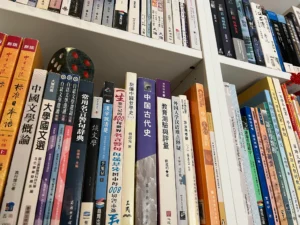 In this article, I will share the best free Chinese reading resources for beginner, intermediate and advanced students. I have spent years collecting resources for learning Mandarin, and these are the best free ones I’ve found!
In this article, I will share the best free Chinese reading resources for beginner, intermediate and advanced students. I have spent years collecting resources for learning Mandarin, and these are the best free ones I’ve found!
Reading and listening are the most important aspects of learning Chinese. Without enough input, you’re not going to perform well in other areas of the language, and lots of reading and listening will help you develop a feel for how the language is used.
Tune in to the Hacking Chinese Podcast to listen to the related episode:
Available on Apple Podcasts, Google Podcast, Overcast, Spotify, YouTube and many other platforms!
Students don’t read enough, however, and when they do, many go about it the wrong way. The most common mistake is spending all reading time on intensive reading, meaning that you read relatively difficult texts and try to understand everything. Advancing in your main textbook is one example of this. The total amount of text you see in Chinese is extremely limited, which is a problem.
What you ought to do in addition to that, and in much larger quantities, is to read texts that are at or below your current level. You need breadth. You need diversity. You need to read characters and words over and over in different, meaningful contexts. You need to solidify and become more familiar with what you have already studied. You need to read more to gain fluency. You need extensive reading!
The 10 best free Chinese reading resources for beginner, intermediate and advanced learners
Below you can find an overview of the best free reading resources. They have been separated into three levels: beginner, intermediate and advanced (click the links for discussions about each level and for general advice about learning Chinese on that level).
Some of the resources listed here have premium content you need to pay for, but my evaluation for the purpose of this article is based solely on content that’s freely available. Naturally, creating good reading content, especially for beginners and intermediate learners, is not easy, so many of the best resources will inevitably cost money.
If you have some money to invest into your learning, get hold of a few graded readers (such as Mandarin Companion, which I reviewed here), preferably with audio, so that they can double as listening practice. I’ve written more about resources worth paying for here, but not everyone can afford to pay for their learning, so the rest of this article will focus on free content!
Please note that these are the best resources I know of and that I will update this article with better resources if I can find them. If you know of a good one I haven’t mentioned here, please leave a comment below!
Back to free Chinese reading resources index
If you’re after listening resources instead, check out this article:
https://www.hackingchinese.com/the-10-best-free-listening-resource-collections-for-learning-chinese/
What if the Chinese reading material is too hard?
For reading to be truly enjoyable and effective as a learning tool, you need to understand almost everything you read. This enables you to pick up the things you didn’t already know without too much extra effort. Naturally, there is no magic threshold where this starts working, but generally speaking, the more you understand, the better. See the article about extensive reading I linked to above for details.
The main challenge for beginner and intermediate learners is that most texts are too difficult, so here are four ways you can scaffold your learning, meaning that you support your understanding in various ways to enable you to deal with content that is harder than you would otherwise be able to deal with.
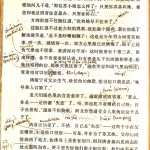 Pop-up dictionaries – This is by far the most important tool of all. As David Moser points out in The new paperless revolution in Chinese reading, it’s something that has revolutionised Chinese reading. I elaborated on this point further in an article about reading Chinese texts on your phone, something you should definitely do if you haven’t tried it already. The main point is that if you can look something up in a fraction of a second, you can suddenly deal with texts that would have been impossible without otherwise. This type of scaffolding is so powerful that you might be tempted to use it too much!
Pop-up dictionaries – This is by far the most important tool of all. As David Moser points out in The new paperless revolution in Chinese reading, it’s something that has revolutionised Chinese reading. I elaborated on this point further in an article about reading Chinese texts on your phone, something you should definitely do if you haven’t tried it already. The main point is that if you can look something up in a fraction of a second, you can suddenly deal with texts that would have been impossible without otherwise. This type of scaffolding is so powerful that you might be tempted to use it too much!- Spoken text – For people who have more problems with reading than listening, being able to hear the written text can help a lot. There are many ways of doing this. To start with, you can use the same type of resources as you do for listening provided that they have transcripts but instead focus on the written text first. Text-to-speech is also becoming better by the day and is now at a level where it actually works well for understanding. I wouldn’t dream of teaching pronunciation based on it, but it does aid understanding if that’s what you’re after.
-

Manga section, bookstore, train station, Shenzhen, China” by Cory Doctorow is licensed under CC BY 2.0.
Visualise the text – Most I said above about visualising audio can also be done for text, such as reading news articles with pictures or using the subtitles of a TV series or movie as your main focus (turn off the audio to remove scaffolding, turn it on to add it). My favourite example of this is, without a doubt, reading comics/manga to learn Chinese. It’s an excellent example of how pictures can help your reading practice!
- Annotate the text – There are multiple ways you can annotate the text to make it easier to understand. This includes generating custom word lists (check Mandarin Spot), adding pronunciation in Pinyin, Zhuyin or just tone marks (check Purple Culture). However, remember that you will learn what your brain processes! If you put Pinyin next to the characters, you’ll probably end up not even trying to read the characters, and so won’t learn to read characters.
This comes from this article, which also includes similar advice for listening to Chinese, so check it out if you’re interested in the full story.
Back to free Chinese reading resources index
The 10 best free Chinese reading resources: Beginner
 As a beginner, you are mostly limited to texts written specifically for language learners. Anything else will force you to spend more time looking things up than you do reading, and that is not a good idea.
As a beginner, you are mostly limited to texts written specifically for language learners. Anything else will force you to spend more time looking things up than you do reading, and that is not a good idea.
The problem is that writing this kind of content is not easy, so most of the really good resources are not free (graded readers, for example), but some are. Let’s have a look at the ten best Chinese reading resources for beginners!
Click here for advice about how to learn Chinese as a beginner
Mandarin Bean
Level: Beginner, intermediate
Topic: Reading, Listening
Type: Resource collection
Mandarin Bean offers a large number of beginner-friendly texts that come with a recording, Pinyin you can toggle on and off, as well as a pop-up dictionary that shows you the meaning, pronunciation and HSK level of the words used. If you register and log in, you can also find exercises and translations. There are more than a hundred texts available for free, directly accessible on their website!
Sample text (HSK 2): 早点儿睡觉 (Sleep Earlier)
Back to free Chinese reading resources index
Chinese Reading and Comprehension (HSKreading.com)
Level: Beginner, intermediate
Topic: Reading
Type: Resource collection
This website contains around 100 short texts for beginners, many of them related to China or Chinese culture. While the levels aren’t very accurate (most texts are harder than they should be), it’s still a great resource. A built-in pop-up dictionary offers Pinyin and translation when you hover over a word. Each text is prefaced by a short sentence in English to give you some context and is followed by a few comprehension questions. There’s no audio.
Sample text (HSK 2): 你怎么迟到了?(Why are you late?)
Back to free Chinese reading resources index
M Mandarin (漫中文)
Level: Beginner, intermediate
Topic: Reading
Type: Resource collection, Tools and apps (iOS and Android)
 This is an app for iOS and Android which has a lot of content, much of it in the form of comics. You can also find the text for each comic separately, but not all the content is free. It’s a little bit hard to figure out what is actually free, but I have used the app for a while and it seems that much is available for free.
This is an app for iOS and Android which has a lot of content, much of it in the form of comics. You can also find the text for each comic separately, but not all the content is free. It’s a little bit hard to figure out what is actually free, but I have used the app for a while and it seems that much is available for free.
The pictures are high-quality and really help with understanding, and you can even click words inside of the comics to bring up definitions, Pinyin and so on. You can toggle translations, read grammar notes and more. The only downside is that the app seems quite buggy at the moment, and some images don’t load. Still, even if you ignore the comic bit and only use the pure text version, it’s still a good reading resource for beginners!
Sample text: I’m unable to link to specific comics, but you should be able to find something you like by using the navigation screen in the app.
Back to free Chinese reading resources index
ChineseGradedReader.com
Level: Beginner
Topic: Reading
Type: Resource collection
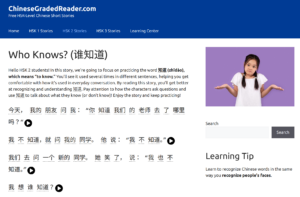 ChineseGradedReader.com is a great resource for learners looking to improve their Chinese reading skills with level-appropriate content. The site offers almost 100 graded stories for free, written so that each one only includes vocabulary from a specific HSK level (1-3). Each story comes with pinyin and English translations, making it easier to follow along, and there are audio recordings to help with pronunciation and listening practice.
ChineseGradedReader.com is a great resource for learners looking to improve their Chinese reading skills with level-appropriate content. The site offers almost 100 graded stories for free, written so that each one only includes vocabulary from a specific HSK level (1-3). Each story comes with pinyin and English translations, making it easier to follow along, and there are audio recordings to help with pronunciation and listening practice.
Sample text: Who Knows? (谁知道)
Back to free Chinese reading resources index
Du Chinese
Level: Beginner, intermediate, advanced
Topic: Reading, Listening
Type: Resource collection, Tools and apps (iOS and Android)
This is a well-designed app for iOS and Android, providing lots of easy-to-read texts on various levels. New content in the app is free, so if you check regularly, you can keep reading, but you need a subscription to access the archive of over a thousand texts. The app features a pop-up dictionary, audio and many other features.
The app is one of the best-designed reading apps I have tried! Still, you can check out many of the free lessons online on their website, which also clearly labels what is premium and what isn’t. Even if most texts are not free, the free content in Du Chinese still makes it one of the best reading resources for beginners!
If you want to access the paid content, the code HACKINGCHINESE will give you 10% off!
Sample text (elementary): The Nose
Back to free Chinese reading resources index
Chinese reading practice (练读中文)
Level: Beginner, intermediate, advanced
Topic: Reading
Type: Resource collection
This site offers around 50 texts in simplified Chinese aimed at beginners, all of them in simplified characters. They are easy to access directly on the website with no need to create an account.
Each story comes with an introduction in English to give you some context, and for the story itself, you can toggle Pinyin and English by clicking a button. Many stories have a rough HSK level associated with them, and some of the key vocabulary outside this range is introduced before the story.
Sample text (HSK2-3): Fable: 洗衣服 – Washing clothes
Back to free Chinese reading resources index
Yes! Chinese (中文天下)
Level: Beginner, intermediate
Topic: Reading
Type: Resource collection
This site features a wide variety of texts for beginners and intermediate learners, loosely graded by HSK level. They are written by different authors, and the style and difficulty vary greatly. On the lower levels, we’re talking about picture books with simple Chinese, but some texts rated as HSK 2-3 are actually much harder.
There probably used to be audio and pop-up definitions for the texts, but since they rely on Flash, they don’t work anymore. Still, this is still a good resource for beginners! You can always copy the text and annotate it elsewhere or use browser plug-ins to make it easier.
Sample text (HSK 2): 阳阳写字
Back to free Chinese reading resources index
Chinese Tools – 40 lessons
Level: Beginner
Topic: Reading, Listening
Type: Resource collection, Courses and textbooks
As the name implies, Chinese Tools is mostly about tools for learners and teachers, but they also have 40 lessons for beginner students of Chinese. This is not reading practice in the sense of most other resources above, but going through simple texts like these is still worthwhile, and there aren’t than many sites that offer this completely for free.
Each lesson has several different dialogues that come with downloadable audio, vocabulary and so on. The only downside is that the website is badly organised and, to be honest, rather ugly, but don’t judge a book by its cover!
Sample lesson (number 4): Conversation 3 : What time do you have a break?
Back to free Chinese reading resources index
My Chinese Reading
Level: Beginner, intermediate
Topic: Reading
Type: Resource collection
This website offers fairly few but mostly well-written texts suitable for beginners. The texts are directly displayed in your browser without the need to log in or register. A simple pop-up dictionary gives you definitions and Pinyin for words you struggle with, but there are’s no audio or other support functions.
Sample text: Going to the gym
Back to free Chinese reading resources index
ChineseSkill
Level: Beginner
Topic: General
Type: Tools and apps (iOS and Android), Courses and textbooks
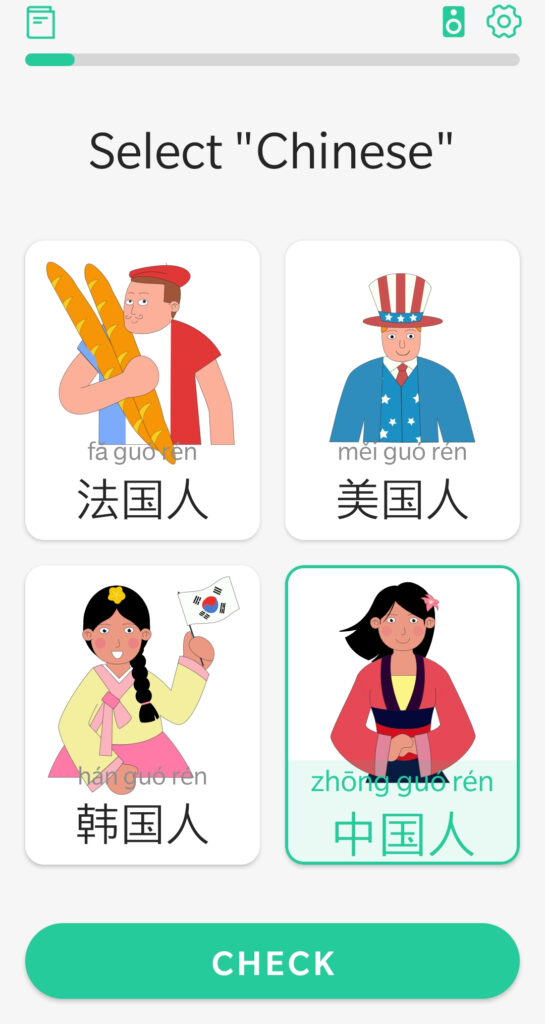 ChineseSkill is an app for iOS and Android that is similar to Duolingo, but is tailor-made for students of Chinese. This makes a big difference because many of the grievances Chinese learners experience with Duolingo are handled much better here. ChineseSkill is not a reading resource per se, but I include it here anyway because if you know no Chinese at all, starting here is not a bad idea.
ChineseSkill is an app for iOS and Android that is similar to Duolingo, but is tailor-made for students of Chinese. This makes a big difference because many of the grievances Chinese learners experience with Duolingo are handled much better here. ChineseSkill is not a reading resource per se, but I include it here anyway because if you know no Chinese at all, starting here is not a bad idea.
Once you’ve worked your way through the free sections of the app, you should be ready to move on to the other reading resources shared above! As far as I know, you can’t learn reading only in this app.
Back to free Chinese reading resources index
More reading resources for beginners
If you want more reading resources for beginners, including paid ones, I discussed that in another article here: The 7 best Chinese reading resources for beginners
https://www.hackingchinese.com/beginner-chinese-reading/
Back to free Chinese reading resources index
 The 10 best free Chinese reading resources: Intermediate
The 10 best free Chinese reading resources: Intermediate
When you reach the intermediate level, you’d think that finding good reading material for free would get easier, but that’s not actually the case. The market for intermediate learners is so much smaller that there really isn’t that much available for free. At this point in your learning, you could start reading Chinese written for native speakers, but it would be very slow and painful, except in some specific cases (see below).
Still, there are some good resources out there, but you need more persistence to find something that suits both your level and your interests. The word “intermediate” also covers a very broad range of learners, and it becomes increasingly difficult to assess the difficult of a text accurately.
Thus, when trying out the resources below, make sure you check a few texts before you determine that a certain resource is too hard for you!
Click here for advice about how to learn Chinese as an intermediate learner
Readibu
Level: Intermediate, advanced
Topic: Reading
Type: Resource collection, Tools and apps (iOS and Android)
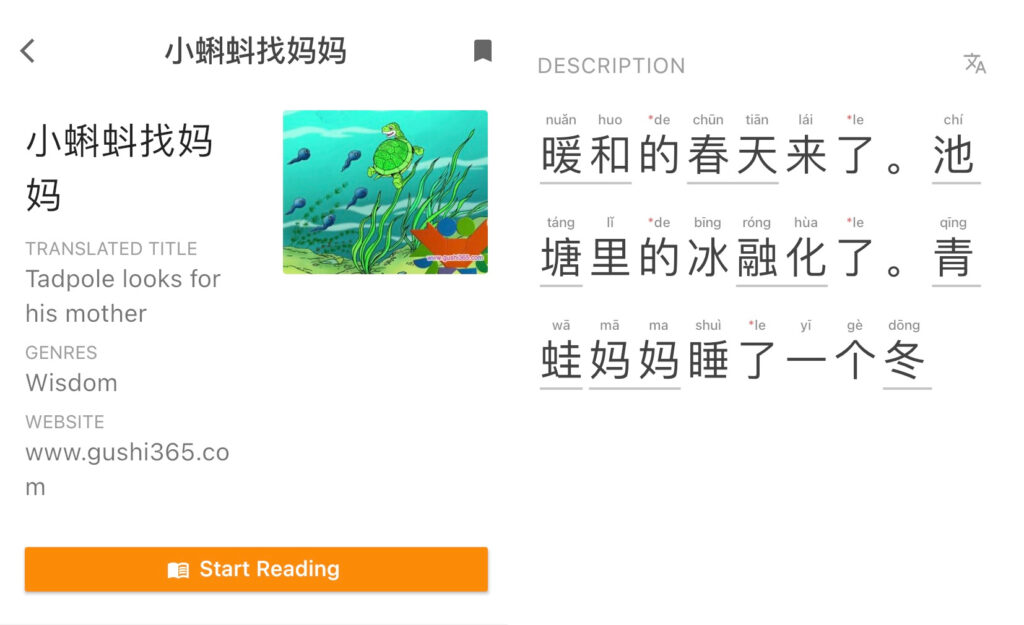 They don’t create the content themselves but rather connect with various online sites that offer stories of different kinds. As such, it’s beneficial for two reasons: First, it makes it much easier to find content since you have everything in one place, and second, it gives you some support with Pinyin and a pop-up dictionary.
They don’t create the content themselves but rather connect with various online sites that offer stories of different kinds. As such, it’s beneficial for two reasons: First, it makes it much easier to find content since you have everything in one place, and second, it gives you some support with Pinyin and a pop-up dictionary.
Back to free Chinese reading resources index
M Mandarin (漫中文)
Level: Beginner, intermediate
Topic: Reading
Type: Resource collection, Tools and apps (iOS and Android)
 This is an app for iOS and Android which has a lot of content, much of it in the form of comics. You can also find the text for each comic separately, but not all the content is free. It’s a little bit hard to figure out what is actually free, but I have used the app for a while, and it seems that much is available for free. The pictures are high-quality and really help with understanding, and you can even click words inside of the comics to bring up definitions, Pinyin and so on. You can toggle translations, read grammar notes and more.
This is an app for iOS and Android which has a lot of content, much of it in the form of comics. You can also find the text for each comic separately, but not all the content is free. It’s a little bit hard to figure out what is actually free, but I have used the app for a while, and it seems that much is available for free. The pictures are high-quality and really help with understanding, and you can even click words inside of the comics to bring up definitions, Pinyin and so on. You can toggle translations, read grammar notes and more.
The only downside is that the app seems quite buggy at the moment, and some images don’t load. Still, even if you ignore the comic bit and only use the pure text version, it’s still a worthwhile resource for intermediate students (I included this app for beginners as well).
Sample text: I’m unable to link to specific comics, but you should be able to find something you like by using the navigation screen in the app.
Back to free Chinese reading resources index
WordSwing
Level: Intermediate, advanced
Topic: Reading, Listening
Type: Resource collection, Tools and apps (iOS and Android)
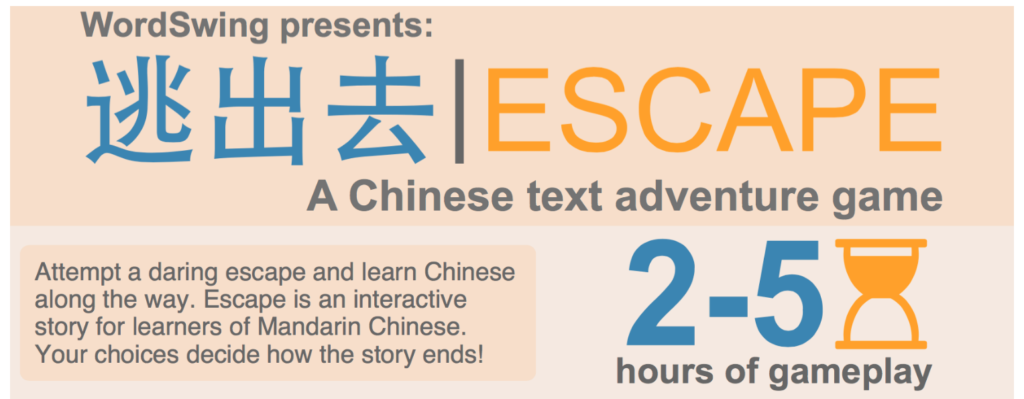 Among other things, WordSwing offers adventure text games created specifically for learners of Chinese, so they are like interactive graded readers where understanding is necessary to make the right choices in the game. Most games require a subscription, but the one called 逃出去 (Escape) is completely free to play. You can also check out the Pepper and Carrot comic, which aren’t games, but still suitable for intermediate learners. Both the games and the comics have manually recorded audio.
Among other things, WordSwing offers adventure text games created specifically for learners of Chinese, so they are like interactive graded readers where understanding is necessary to make the right choices in the game. Most games require a subscription, but the one called 逃出去 (Escape) is completely free to play. You can also check out the Pepper and Carrot comic, which aren’t games, but still suitable for intermediate learners. Both the games and the comics have manually recorded audio.
Sample game: 逃出去 (Escape)
Back to free Chinese reading resources index
SlowChinese (慢速中文)
Level: Intermediate, advanced
Topic: Reading, Listening
Type: Resource collection
This is actually a podcast, but one that I like quite a lot and that also has transcripts for every episode, so you can think of it as a reading resource with audio! There are roughly 200 episodes available, and even if the podcast is no longer being produced, these are still worthwhile to go through. There is no support for the reading itself, so you might want to make use of the methods and tools mentioned in the introduction if you find the texts difficult.
Sample text: 73 – 锵锵三人行
Back to free Chinese reading resources index
Yes! Chinese (中文天下)
Level: Beginner, intermediate
Topic: Reading
Type: Resource collection
This site features a wide variety of texts for beginners and intermediate learners, loosely graded by HSK level. They are written by different authors, and the style and difficulty vary greatly. On the lower levels, we’re talking about picture books with simple Chinese, but some texts rated as HSK 2-3 are actually much harder. There probably used to be audio and pop-up definitions for the texts, but since they rely on Flash, they don’t work anymore. Still, this is still a good resource for beginners! You can always copy the text and annotate it elsewhere or use browser plug-ins to make it easier.
Sample text (HSK 4): 嫦娥工程
Back to free Chinese reading resources index
Chinese reading practice (练读中文)
Level: Beginner, intermediate, advanced
Topic: Reading
Type: Resource collection
This site offers around 40 texts in simplified Chinese aimed at intermediate learners, all of them in simplified characters. They are easy to access directly on the website with no need to create an account. Each story comes with an introduction in English to give you some context, and for the story itself you can toggle Pinyin and English by clicking a button. Many stories have a rough HSK level associated with them and some of the key vocabulary outside this range are introduced before the story.
Sample text: Mythology: 《精卫填海》 from the Classic of Mountains and Seas
Back to free Chinese reading resources index
Free Chinese reading practice with movie subtitles
This is not a specific reading resource but more an idea of what you can read as an intermediate learner. Movie subtitles are great because they are often based on dialogues and, therefore, considerably easier than novels and short stories.
If you pair reading with the movie itself, you also have visual support for your reading. You can also extract or find the subtitles for most movies online by simply searching for the name of the movie + 字幕. You’ll likely get a .srt file, which can be opened in most text editors. While on the topic of videos, it’s worth noting that YouTube and many other video sites have transcripts and sometimes translations.
There are also extensions for browsers to help you out, such as Language Learning with YouTube for Chorme.
Back to free Chinese reading resources index
Du Chinese
Level: Beginner, intermediate, advanced
Topic: Reading, Listening
Type: Resource collection, Tools and apps (iOS and Android)
This is a well-designed app for iOS and Android, providing lots of easy-to-read texts on various levels. New content in the app is free, so if you check regularly, you can keep reading, but you need a subscription to access the archive of over a thousand texts. The app features a pop-up dictionary, audio and many other features. The app is one of the best-designed reading apps I have tried! Still, you can check out many of the free lessons online on their website, which also clearly labels what is premium and what isn’t. Even if most texts are not free, the free content in Du Chinese still makes it one of the best reading resources for intermediate learners!
If you want to access the paid content, the code HACKINGCHINESE will give you 10% off!
Sample text: 为什么中国人爱喝热水
Back to free Chinese reading resources index
My Chinese Reading
Level: Beginner, intermediate
Topic: Reading
Type: Resource collection
This website offers fairly few but mostly well-written texts suitable for intermediate learners. The texts are directly displayed in your browser without the need to log in or register. A simple pop-up dictionary gives you definitions and Pinyin for words you struggle with, but there’s no audio or other support functions.
Sample text: About Stephen Hawking
Back to free Chinese reading resources index
故事365
Level: Intermediate
Topic: Reading
Type: Resource collection
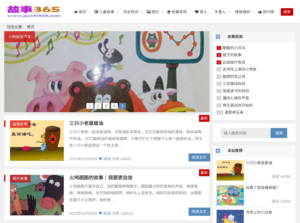 Gushi365.com is a Chinese-language website dedicated to children’s stories, offering a wide range of content including fairy tales, bedtime stories, fables, and educational narratives. The site categorizes its stories into sections such as 幼儿故事 (stories for young children), 童话故事 (fairy tales), 睡前故事 (bedtime stories), 益智故事 (educational stories), and 寓言故事 (fables). Additionally, it features historical and folk tales, idiom stories, and biographies of notable figures. Some texts are digitised with original scans available, most have digital text.
Gushi365.com is a Chinese-language website dedicated to children’s stories, offering a wide range of content including fairy tales, bedtime stories, fables, and educational narratives. The site categorizes its stories into sections such as 幼儿故事 (stories for young children), 童话故事 (fairy tales), 睡前故事 (bedtime stories), 益智故事 (educational stories), and 寓言故事 (fables). Additionally, it features historical and folk tales, idiom stories, and biographies of notable figures. Some texts are digitised with original scans available, most have digital text.
Please note that these texts are harder than you might expect. Just because they have large, friendly pictures doesn’t mean that the language is easy. Most texts here are considerably harder than any graded reader written for foreigners learning Chinese.
Sample text: 成语故事:愚公移山
Back to free Chinese reading resources index
The 10 best free Chinese reading resources: Advanced
 Now that you’ve passed the dreaded intermediate plateau of learning Chinese, you can start reading Chinese written for natives by natives. This means that your options are virtually unlimited, and it is, in fact, very easy to find free materials. Naturally, you will need to provide your own scaffolding, as none of these resources come with vocabulary lists, Pinyin or pop-up dictionaries. See the introduction for how to scaffold your learning.
Now that you’ve passed the dreaded intermediate plateau of learning Chinese, you can start reading Chinese written for natives by natives. This means that your options are virtually unlimited, and it is, in fact, very easy to find free materials. Naturally, you will need to provide your own scaffolding, as none of these resources come with vocabulary lists, Pinyin or pop-up dictionaries. See the introduction for how to scaffold your learning.
As was the case for the intermediate resources, difficulty can vary hugely between resources or even between texts within the same resource. Thus, don’t give up just because one article turns out to be difficult!
Click here for advice about how to learn Chinese as an advanced learner
科普中国 – 十万个为什么
Level: Advanced
Topic: Reading
Type: Resource collection
This site is provided by 科普中国, and as the name implies, it answers why questions about everything from aliens to economics. The articles are of varying length, and while there aren’t literally 100,000 answers here, you’re still likely to find a lot of interesting reading! For even more popular science, you can, of course, also check the main site, but I think these questions are good for learners because they have a very clear purpose.
Back to free Chinese reading resources index
百度百科
Level: Advanced
Topic: Reading
Type: Resource collection
百度百科 is a collaborative encyclopedia that covers a huge range of topics, sometimes with surprising quality, even including video and in-depth discussions of topics. When searching for various things in Chinese, 百度百科 often ranks very high. For language learners, it’s interesting to note that this is true for many Chinese-related questions as well, such as the origins of idioms. Check this entry for 未雨绸缪, for example, which comes with a video and enough information about origins to satisfy most readers, or the entry on pandas here: 大熊猫.
Back to free Chinese reading resources index
小故事 – 故事大全
Level: Advanced
Topic: Reading
Type: Resource collection
This site hosts a very large number of short stories and other texts, sorted into different categories. These are of course written by native speakers for native speakers, but the reduced length makes the texts more accessible for learners. Choose a category that catches your interest and start reading! If you find authors you like, see what else they have written. Naturally, the difficulty varies a lot between different categories and different authors, so don’t give up before you’ve tried a few different ones if you find it difficult.
Back to free Chinese reading resources index
Slow Chinese 每周漫闻
Level: Intermediate, advanced
Topic: Reading
Type: Resource collection
This is a newsletter for advanced students run by Andrew Methven. The free version includes a weekly newsletter with highlighted readings and some interesting vocabulary highlighted and discussed. While I think most of your vocabulary should be naturally absorbed by reading extensively, it’s great to receive a weekly dose of potentially useful vocabulary, presented in context and along with some reading practice. This is particularly good for getting into new topics you haven’t studied in Chinese, which is considerably easier with some handholding.
There are also extra premium features not covered by this recommendation, such as audio recordings, extra material, subscribers webinars and more, but the free weekly newsletter is enough to land Slow Chinese on this list of the best free Chinese reading resources! If you do end up subscribing, this link will give you 10% off and will also help support Hacking Chinese.
Note: The Slow Chinese newsletter is unrelated to the old Slow Chinese podcast, which I still recommend in my best free Chinese listening resources article.
Back to free Chinese reading resources index
知乎 – 有问题,就会有答案
Level: Intermediate, advanced
Topic: Reading, writing
Type: Resource collection, social learning
This is the most popular Chinese question-and-answer site and works roughly like Quora does in English. Since everything is user-generated, quality and difficulty vary greatly, but if you like this kind of forum, it’s great for reading practice. You can also read many different answers to the same question, which makes it far more likely that you’ll recycle new vocabulary. I chose this particular question about why the sky is blue because of 李永乐老师, which I recommended for advanced students here:
Back to free Chinese reading resources index
mylingua
Level: Advanced
Topic: Reading
Type: Resource collection, Tools and apps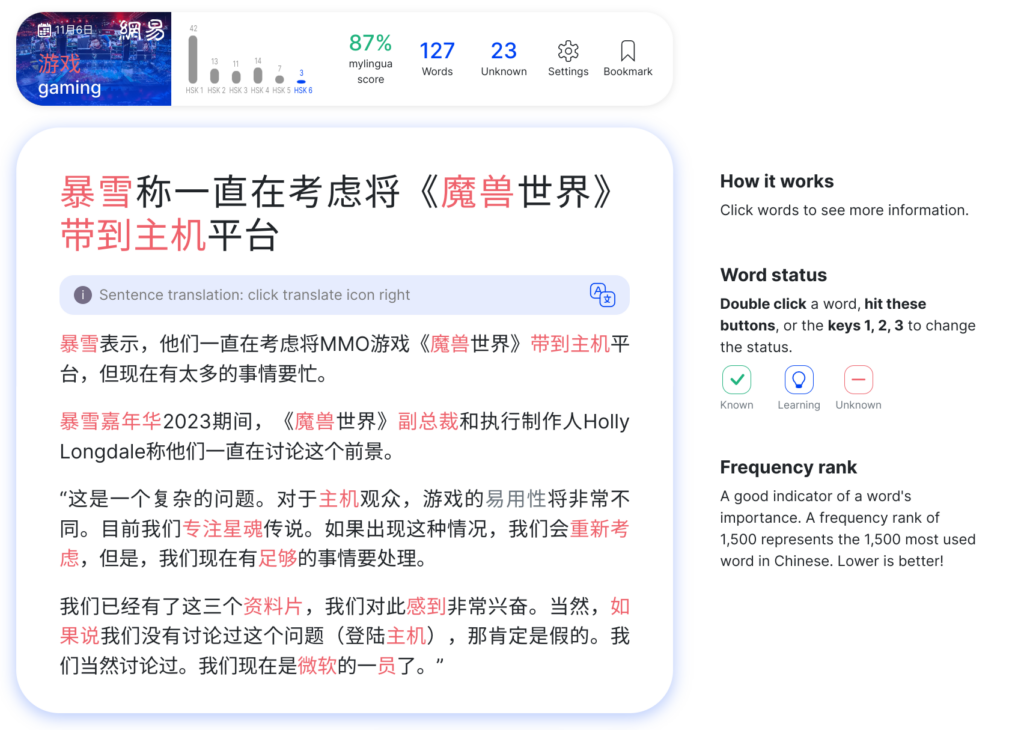
Mylingua is a new platform that allows you to access authentic Chinese reading content from the internet, helping you pick reading material that both suits your interests and your reading ability. The service also includes various tools to make reading easier, such as a pop-up dictionary. As you read more and engage with the content, the recommendations will become more accurate. You can also import your own texts if you want!
Back to free Chinese reading resources index
哈佛商业评论
Level: Advanced
Topic: Reading
Type: Resource collection
This is the Chinese language version of Harvard Business Review, so it is perfect for those of you who work with or are otherwise interested in management, leadership, marketing or other business-related topics. This site is the official Chinese version maintained by Harvard University.
Back to free Chinese reading resources index
Improve your Chinese reading skills with novels (全本小说网, 努努书坊 and 好讀)
Level: Advanced
Topic: Reading
Type: Resource collection
There are many sites that offer novels and other forms of literature online, so this is not a specific resource as such. For simplified characters, check out 全本小说网, which hosts a very large number of novels and short stories, mostly from less-known authors. For a similar site with publications in traditional Chinese, check 好讀.
If you want to read more famous works, check out 努努书坊, but I’m not sure about the legality of this site, so use it at your own risk. Some of the major publishers in China have their own apps where you can purchase books, but they also have some free content. Check out 起点 and 纵横.
Back to free Chinese reading resources index
Chinese reading practice with blogs and social media (新浪博客, 微博 and 微信)
Level: Advanced
Topic: Reading
Type: Resource collection
Again, this is not a specific recommendation but more a reminder that social media and blogs can be a great source for reading material. For simplified characters, check out 新浪博客, 微博 and 微信 when it comes to blogging and social media in general. These platforms have hundreds of millions of active users, and their apps are ubiquitous in China.
I’m not very up-to-date when it comes to blogging in Taiwan, but Facebook is widespread, and you can check out Line for chatting, which is also a great way of combining reading and writing Chinese!
Back to free Chinese reading resources index
Chinese news portals for better reading comprehension
Level: Advanced
Topic: Reading
Type: Resource collection
Chinese news provides a never-ending source of reading material, and provided that you are interested and maybe also know about the topic in advance, it can be manageable without near-native reading ability. There are many, many more news portals than 新浪网新闻中心 shown above, but I’m sure advanced learners will find their own favourite. For those of you who study traditional characters, check out 中廣全球資訊網.
You can also check out certain Western media outlets that offer Chinese versions of some articles, but you should be aware that these articles have been translated from English and sometimes don’t sound very natural in Chinese. Examples are BBC and New York Times.
Back to free Chinese reading resources index
Honourable mentions
This is a list of resources that have previously been on the main list but have been supplanted by better alternatives. If a resource has been removed because it doesn’t qualify, such as if a resource is no longer free, it will not appear here.
- A Chinese Text Sampler: An Annotated Collection of Digitized Chinese Texts for Students of Chinese Language and Culture
- xkcd中文站: 一个关于浪漫、隐喻、数字、以及语言的线上漫画
500 learning resources sorted and tagged by level, topic and type
I have spent many years building up a huge library of resources for learning Chinese, including those mentioned in this article. If you’re looking for more reading resources or resources for other areas of learning Chinese, head over to Hacking Chinese Resources! There, you can find articles sorted by difficulty:
But also by topic:
…and more!
What are your favourite free Chinese reading resources?
This article is based on a lot of research and took dozens of hours to compile, but I’m sure that I missed good resources, and new resources might have popped up recently too. What’s your favourite free reading resource? Please leave a comment below to let me and others know! Don’t forget to mention why you like it!
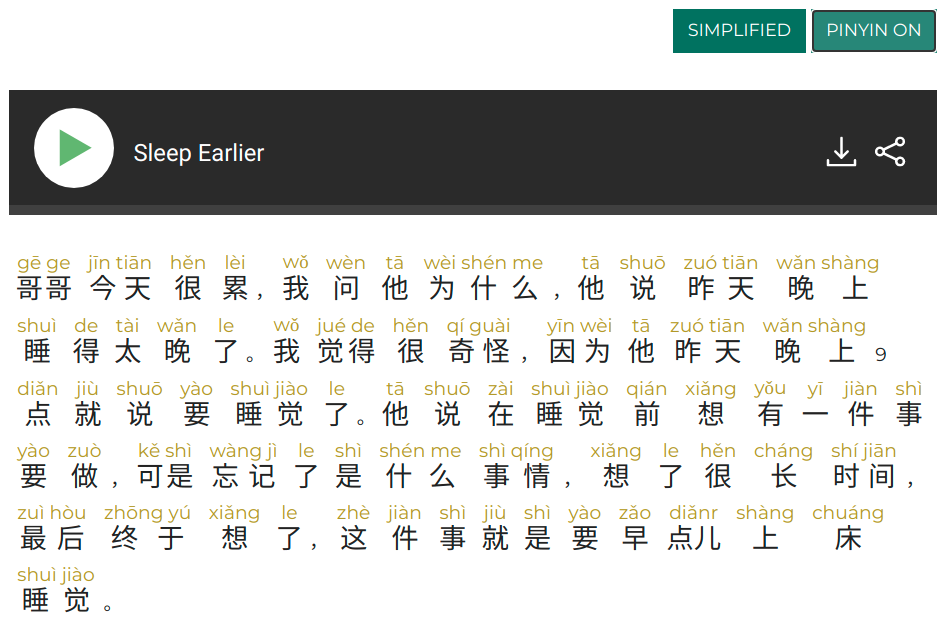
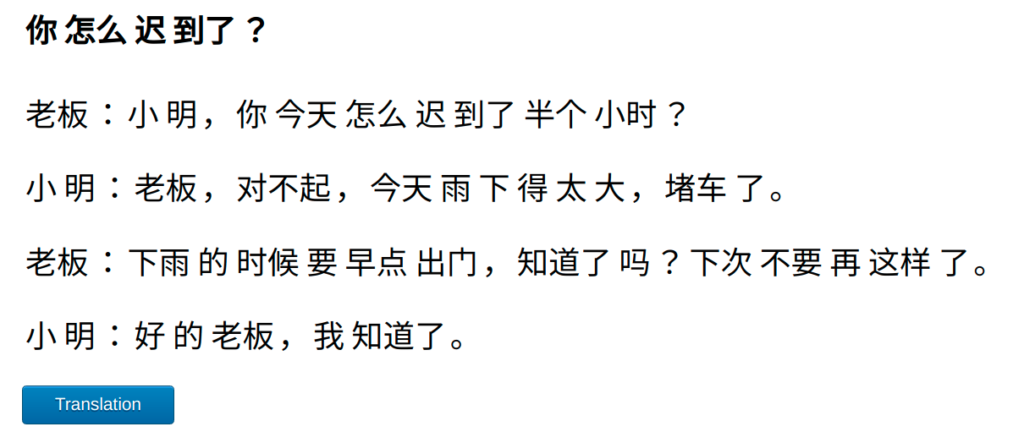


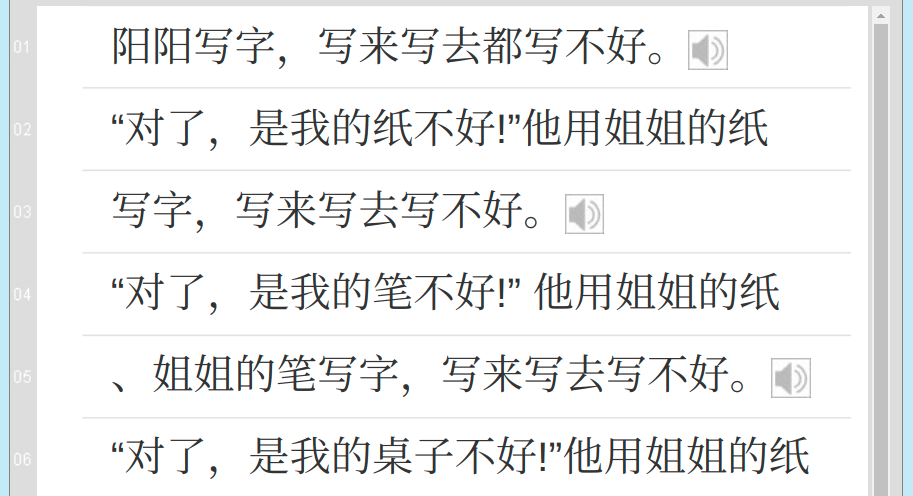
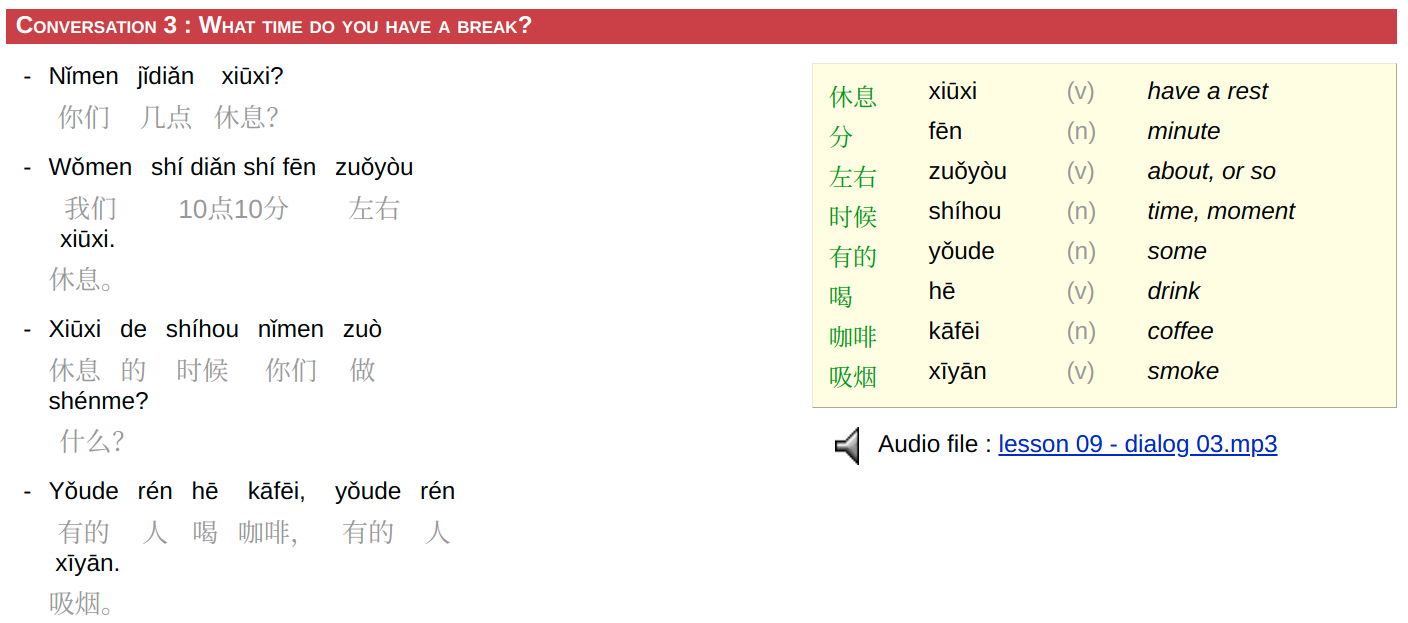
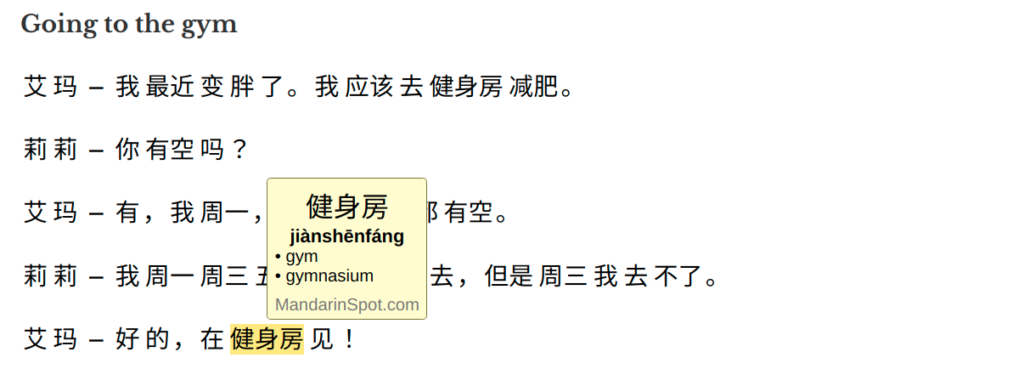

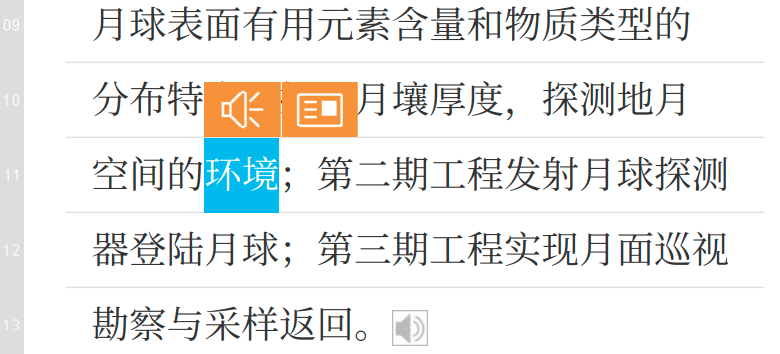
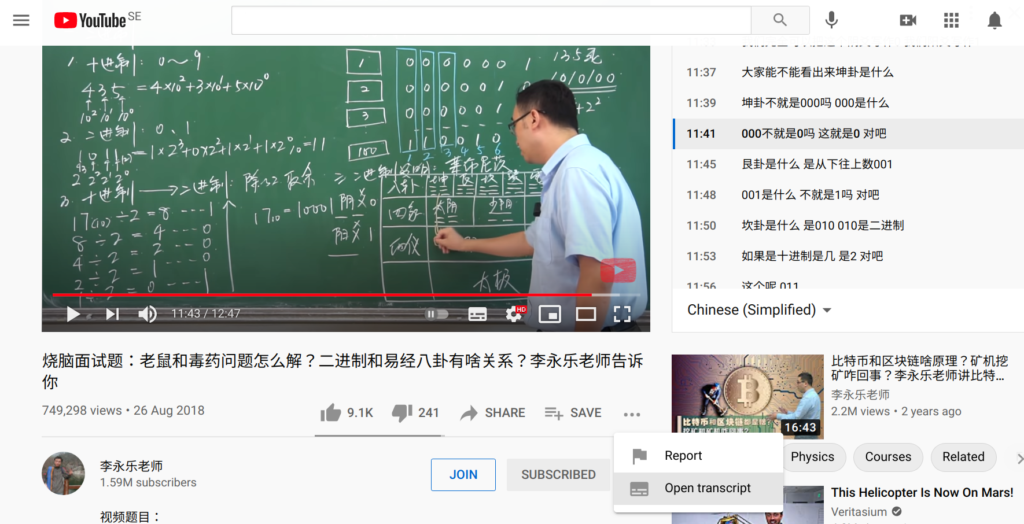


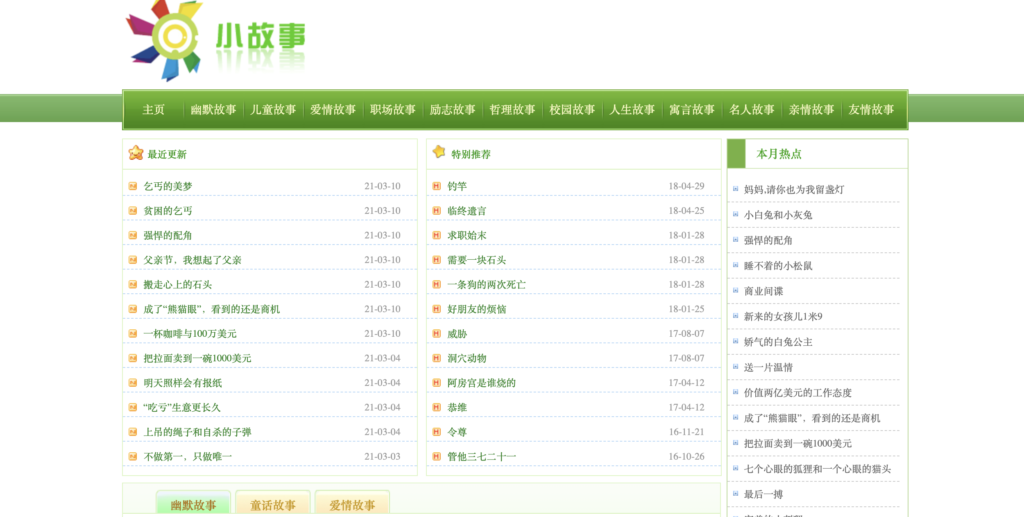



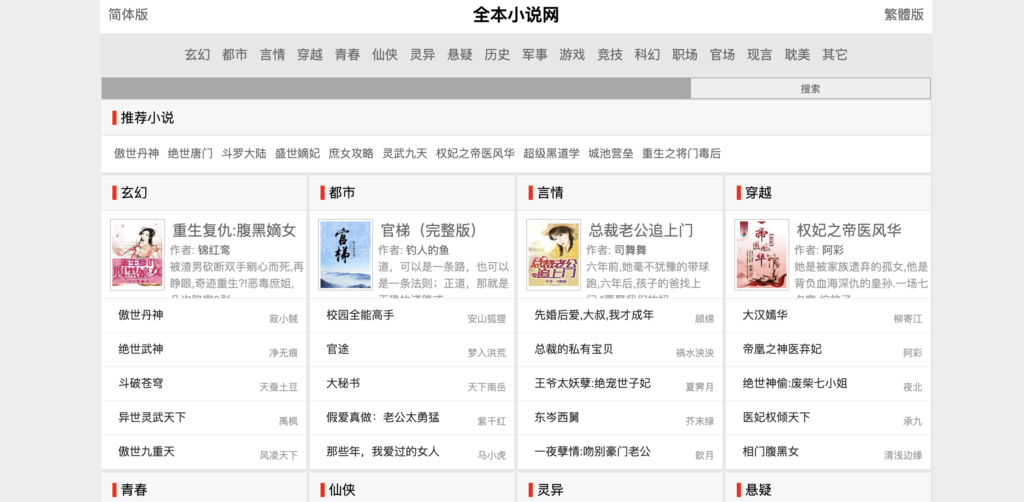




51 comments
I’m curious about why you don’t mention the Defrancis reader series, Since they are so impressively organised, progressively taking you right from 你好 to 1200 characters, something like 5-10,000 combinations with built in spaced repetition and almost excess example dialogues and narratives. I’ve been reading it pretty intesively. I just finished part 1 of Beginning Chinese Reader, but I’m heading off for a 3 month trip around China/Taiwan next week speaking Mandrin, so I feel like I won’t have time or motivation to do any reading. Would you recommend taking time out for reading during conversational focused travel or could I focus soley speaking/listening with things like Chinesepod until I return. Thanks if you have the time to send back any tips!
I didn’t include those books for the same reason I didn’t include any other books, i.e. they aren’t free. I did mention graded readers, though. Regarding your other question, I think you should focus on what the environment has to offer. If you travel for a limited time, don’t waste the time on reading! You can read when you get back home, but it will be a lot harder to speak/listen in dialogues later.
I’ve really enjoyed chinesereadingpractice.com.
The site divides readings into Beginner, Intermediate, and Advanced. You can hover over words to get pinyin and English. Very handy.
http://www.jw.org/zh-hans/ has lots of professionally translated stuff for kids and adults. Nearly all the texts are available in audio and text version, and all of it is available for download or online viewing without any required logins. You can also browse the site in English: http://www.jw.org/en/
I have been using the Manga Rock app on my phone to kill time. It is a Manga reader with a ton of free Manga.
It has several Chinese sources, and you can filter by category. You can change the interface between several languages including English and Chinese. It is for iPhone, iPad, and Android usable.
http://www.mangarockapp.com/
If you look in the settings you can see the websites that it gets it Manga from. Going directly to the website seems a bit more intimidating tho.
http://www.imanhua.com/
http://manhua.178.com/
I would say the level is probably appropriate from lower intermediate through advanced.
ahem, that jw.org web site is the site of a religious group, the Jehovah’s Witnesses. Not that there’s anything wrong with that! 🙂 (that I know of :D) But it’s worth mentioning what the site is about, otherwise people might assume it’s a Chinese learning site, and get rather confused. It does seem to have a lot of texts and good quality audio, and the texts are in easy-to-understand language.
I thought the site was for Chinese learning, started reading an article titled “魔鬼撒但真的存在吗?”, and began to feel a bit strange. (Spoiler: the article hedges a little, but does conclude 许多人都看出魔鬼撒但真的存在 so be careful!).
Sorry if I should have mentioned site content, I just added it because you can get listening practice and reading practice at the same time with professionally translated material. Site claims to have quality content in over three hundred languages. Also, there’s new content every couple weeks, which is more than I can say for a site like mandaread.
There’s nothing wrong with adding content as long as it’s about learning Chinese and not illegal! Using one’s interests/beliefs to learn a language is usually very good, but of course things should be labelled properly so that others know what to expect. This is true of all resources, not just this case. 🙂
Your event for November “reading Chinese” was a wonderful idea. I only wanted to read two hours a day, but now I’m addicted to reading the Chinese texts you suggested. I can’t get enough!
Thank you so much for all of this free content. I remember when I embarked upon learning Chinese. There was an overwhelming plethora of content out there but I couldn’t see any structure to it. After many many months of plowing through the endless material, Youtube, Advice sites, Blogs, Courses I thought it was not going to happen and was just about to stop. I then happened upon some quality material that was able to guide me into structuring my own Chinese course. Realising the way to learn first was the alphabet along with the tones. Then I started building on words using about sometimes 5-7 resources some I’d use more than others. I’ve also joined QQ.com and I talk to native Chinese which helps. Instinctively I knew I couldn’t just use one or two resources as too many thing would be left out. I’ve now got into a rhythm and enjoying it but I always knew I needed to start reading and watching CTV. I’ve just started watching Chinese TV and am able to pick out some words although still at basic level. I now thought I needed to start reading but couldn’t find any free content that was useful for me. This has finally rounded my learning 360 degrees as was deficit by 45 degrees. I didn’t want t spend any money at this moment because one can get carried away. I’ve been there and realised it hasn’t helped. Thank you for this material and those in the comments also. I feel very optimistic about learning Chinese and everything that has been said about the way one will feel etc is very true. Luckily for me, my instincts told me this is all natural and this is what you should be doing. Perhaps I may just blog when I acquire a certain level of expertise. xie xie ni.
十万 means 100,000 not 10,000 … if you really wanna be “literal” about not being “literal” 😀
Good catch! 🙂 I have fixed it!
Hello Olle,
For advanced learners, I have found reading news articles on websites such as the BBC news in Chinese, or articles in Chinese on Wikipedia etc. etc. invaluable for learning vocabulary for talking about international matters, rather than just China-orientated materials. We don’t always want to read about all things Chinese. Sometimes we may want to read about Western topics in Chinese. I might want to read about Pablo Picasso in Chinese, for example. To do this I use the Chrome browser with the Perapera extension to check the meaning of characters I don’t know.
A really good app for reading on advanced level that I’ve been using is “One 一个”. It’s run by the Chinese author 韩寒, and offers, among other things, short stories by a bunch of different authors. There’s a lot of everyday philosophy, which I enjoy a lot. It’s free, and I think you can download it for both Android and iPhone. They do have a website (http://wufazhuce.com/), it’s not great, but can be used for sending texts to an e-reader, or if you really prefer reading on the computer.
Thank you for the recommendation! I’ve put it on my list of resources to check out.
Great list! I’d add maayot to it which I’ve been using alongside DuChinese. Both work great and have quite different kind of content.
Everyday Chinese Listening & Reading Practise https://youtu.be/B6AKeHP1IKo
I noticed that you posted a number of links recently! I appreciate help with finding new resources, but I think you might convince more people (including myself) to check them out if you write something about them. Simply saying “podcsast: [link]” is not really enough, as there are literally hundreds of podcasts. What podcast is it? what makes it extra useful for students?
This is so cool, I love it! Free Chinese reading resources are very helpful & useful for mandarin teacher like me, it provide reading with appropriate vocabulary according to students proficiency level. Thank you,
Glad you found it helpful! I compiled the list at least partly so that teachers have a convenient way to recommend good reading content without having to spend all the effort collecting resources themselves. If you find anything you think should be on the list, don’t hesitate to let me know!
I guess this question is about a prerequisite skill to reading.
In a nutshell, I’m looking for the best word to describe the process of looking at a Chinese sentence and then tokenizing all of its hanzi into words.
⬆️ It first appears to be a trivial question. But when I am talking with others about the process, I would like to know which word they commonly use. This is so I just have to type one word maybe a few dozen times, instead of a paragraph that illustrates what I’m talking about.
你的眼睛真漂亮.
你, 的, 眼睛, 真, 漂亮.
你的眼睛是什么颜色的?
你, 的, 眼睛, 是, 什么, 颜色, 的?
你的眼睛很美.
你, 的, 眼睛, 很, 美.
玩手机对眼睛不好.
玩, 手机, 对, 眼睛, 不, 好.
我的眼睛很干.
我, 的, 眼睛, 很, 干.
⬆️ Is there a common English & Chinese word used to describe that process? Thanks in advance.
Yes, this is called “word segmentation” in English. In Chinese, this is 分词/分詞, but note that this also means “participle”, so most normal people know this word from English grammar, not for the completely different meaning “word segmentation”. But if you want to talk about these issues or find papers about them, these are probably the best terms to use. Also note that you probably need to qualify your search if you want more linguistic aspects of this because lots of the stuff you’ll find is about computer science and how to do word segmentation automatically, which is a notoriously difficult problem.
Hi,
How should I use audio with readers? If there is an accompanying audio track with a reader, should I read and listen at the same time, or is that going to be detrimental to reading and I should just read? I use an OCR text-to-speech pen currently with my readers for quickly looking up words when I’m stumped. But if I can go faster just listening and reading, I’d rather do that.
I’m a heritage learner with mandarin and cantonese backgrounds, with perfect pronunciation, and with listening I can easily make out the sound of every word when native speakers with regional accents are conversing, including talking over each other. So I don’t really care about using audio to listen better.
Thanks!
Hi Rei! Great question! I’ll address this in an upcoming Q&A podcast episode, but it’ll probably be in a month or two, so instead of letting you wait for that, I wrote down some quick thoughts. It would be interesting to hear what you think about this later when you’ve seen how this works out for you!
Here’s my preliminary answer:
I think there’s merit in both approaches, so you should use both methods in parallel. Since you already know the spoken language, listening while reading will allow you to focus on different things than reading only will. For example, you will strengthen the link between the spoken and written form of words. You will also be able to focus on higher-level reading processes, such as understanding the structure of the text, interpreting its meaning and the like, since you spend less time on lower-level reading processes such as decoding characters and word segmentation. You will therefore be able to deal with more difficult texts compared to when you only read. See this week’s article/episode about scaffolding for more about this. However, for any of this to improve your reading, you need to make sure that you are focusing on the written language and not just listening, because if you aren’t focusing, it will do little for your reading ability.
Still, reading is reading, and having spoken audio is a type of scaffolding. If you always use it, you might not develop the skills you need to read without the scaffolding. Lower-level processes are very important when reading, so if you bypass them too much because you hear the same information spoken aloud, you will not develop them enough to become a proficient reader. For example, segmenting a sentence into words is easy if you hear the audio and know what the sentence means, but if you don’t have that support, it’s much harder. If you never practise doing this because you always hear the spoken version, you will struggle to read without listening at the same time.
It’s hard to say how much you should do each, but I’m inclined to say that you should use audio when you tackle texts that are relatively difficult for you. This will enable you to read a broader range of texts, which is great. Most of your reading should be done with texts you can read without too much scaffolding, and if you don’t need to listen in parallel, don’t do it. So short answer: Do both, but don’t rely on scaffolding, such as listening at the same time, too much, especially not when you can understand the texts well enough without it, and if you can’t, read simpler texts!
Hey Olle, Just getting back to you on this. I think you’re right about the scaffolding and I think about this in relation to motivation as well. I’ve found that I start out with the audio just to get going and once I have enough momentum in a section, I’ll just go ahead and read on my own, especially when I’m realizing I’m reading ahead of the audio. I’m also noticing that I take in more of the sentence when I’m listening to the audio whereas I’m still looking at characters and character combinations when I’m reading. So I think switching back and forth generally works.
This is such a helpful compilation of Chinese reading resources! I love how it’s organized by skill level, making it easy to find the right tools. Resources like Du Chinese and The Chairman’s Bao have been super effective for me, but I’m excited to check out some of the others on this list. Thank you for sharing these gems—this will definitely help many learners improve their Chinese reading skills!
Here’s a new series on Youtube about reading Chinese at HSK Level 1 that’s just been recently uploaded:
https://www.youtube.com/watch?v=d_KSyYCU5j0&list=PLvA_gXIhzZNWW7XZnECB9F4NuhklCKF45